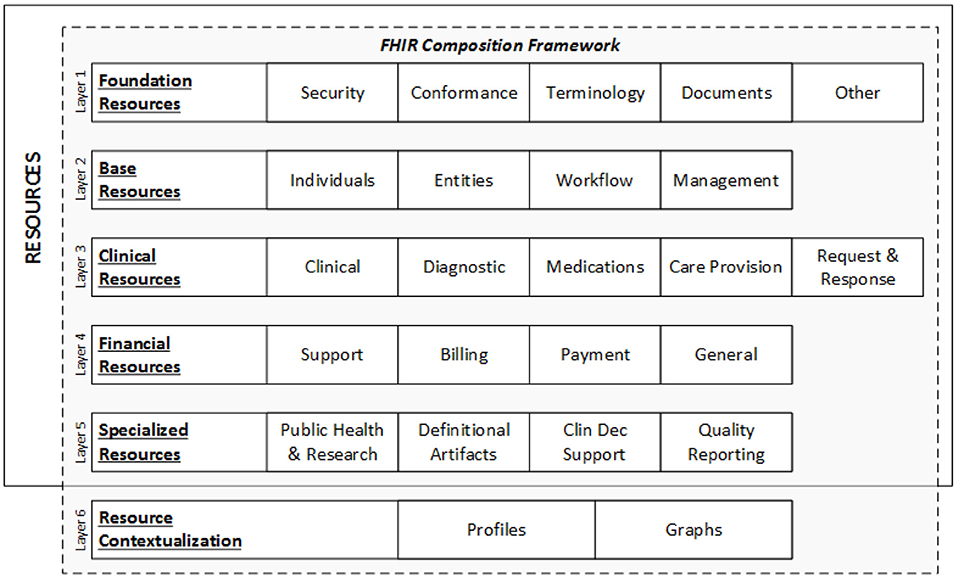Difference between revisions of "Template:Article of the week"
Shawndouglas (talk | contribs) (Updated article of the week text) |
Shawndouglas (talk | contribs) (Updated article of the week text) |
||
| Line 1: | Line 1: | ||
<div style="float: left; margin: 0.5em 0.9em 0.4em 0em;">[[File: | <div style="float: left; margin: 0.5em 0.9em 0.4em 0em;">[[File:Fig2 Yogesh FrontPubHlth2022 10.jpg|240px]]</div> | ||
'''"[[Journal:A | '''"[[Journal:Health informatics: Engaging modern healthcare units: A brief overview|Health informatics: Engaging modern healthcare units: A brief overview]]"''' | ||
With a large amount of unstructured data finding its way into health systems, [[health informatics]] implementations are currently gaining traction, allowing healthcare units to leverage and make meaningful insights for doctors and decision makers using relevant [[information]] to scale operations and predict the future view of treatments via information systems communication. Now, around the world, massive amounts of data are being collected and analyzed for better patient diagnosis and treatment, improving [[public health]] systems and assisting government agencies in designing and implementing public health policies, while also instilling confidence in future generations who want to use better public health systems. This article provides an overview of the [[Health Level 7#Fast Healthcare Interoperability Resources (FHIR)|Health Level 7 FHIR]] architecture ... ('''[[Journal:Health informatics: Engaging modern healthcare units: A brief overview|Full article...]]''')<br /> | |||
<br /> | <br /> | ||
''Recently featured'': | ''Recently featured'': | ||
{{flowlist | | {{flowlist | | ||
* [[Journal:A roadmap for LIMS at NIST Material Measurement Laboratory|A roadmap for LIMS at NIST Material Measurement Laboratory]] | |||
* [[Journal:A model for design and implementation of a laboratory information management system specific to molecular pathology laboratory operations|A model for design and implementation of a laboratory information management system specific to molecular pathology laboratory operations]] | * [[Journal:A model for design and implementation of a laboratory information management system specific to molecular pathology laboratory operations|A model for design and implementation of a laboratory information management system specific to molecular pathology laboratory operations]] | ||
* [[Journal:DigiPatICS: Digital pathology transformation of the Catalan Health Institute network of eight hospitals - Planning, implementation, and preliminary results|DigiPatICS: Digital pathology transformation of the Catalan Health Institute network of eight hospitals - Planning, implementation, and preliminary results]] | * [[Journal:DigiPatICS: Digital pathology transformation of the Catalan Health Institute network of eight hospitals - Planning, implementation, and preliminary results|DigiPatICS: Digital pathology transformation of the Catalan Health Institute network of eight hospitals - Planning, implementation, and preliminary results]] | ||
}} | }} | ||
Revision as of 19:27, 28 November 2022
"Health informatics: Engaging modern healthcare units: A brief overview"
With a large amount of unstructured data finding its way into health systems, health informatics implementations are currently gaining traction, allowing healthcare units to leverage and make meaningful insights for doctors and decision makers using relevant information to scale operations and predict the future view of treatments via information systems communication. Now, around the world, massive amounts of data are being collected and analyzed for better patient diagnosis and treatment, improving public health systems and assisting government agencies in designing and implementing public health policies, while also instilling confidence in future generations who want to use better public health systems. This article provides an overview of the Health Level 7 FHIR architecture ... (Full article...)
Recently featured:
- A roadmap for LIMS at NIST Material Measurement Laboratory
- A model for design and implementation of a laboratory information management system specific to molecular pathology laboratory operations
- DigiPatICS: Digital pathology transformation of the Catalan Health Institute network of eight hospitals - Planning, implementation, and preliminary results










